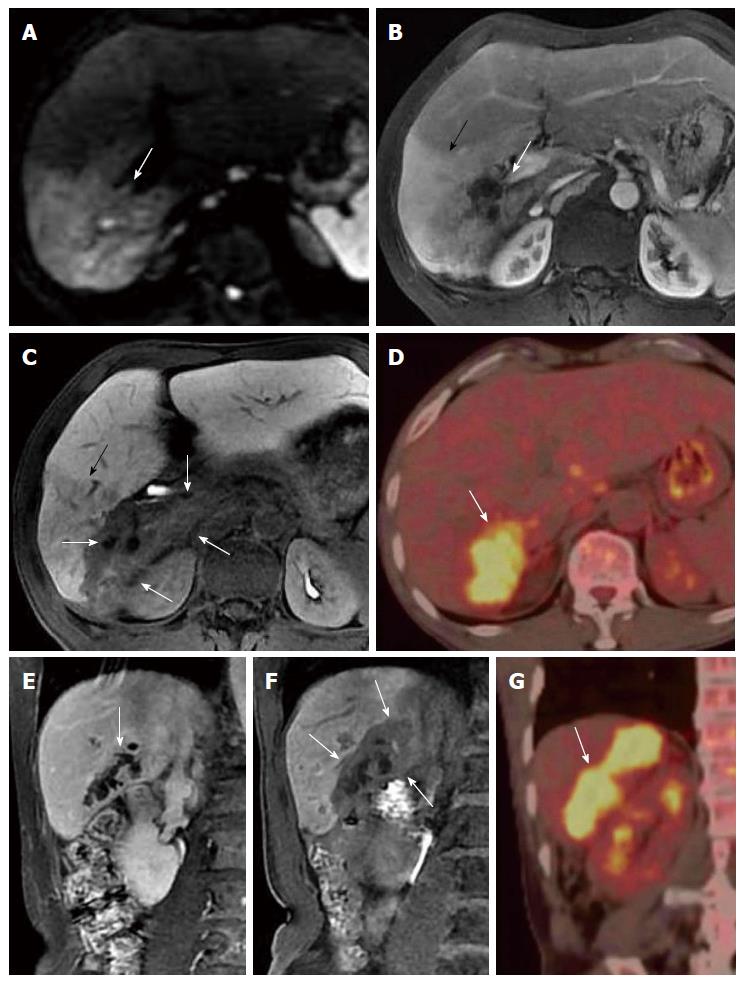Copyright
©The Author(s) 2015.
World J Gastroenterol. Jul 7, 2015; 21(25): 7824-7833
Published online Jul 7, 2015. doi: 10.3748/wjg.v21.i25.7824
Published online Jul 7, 2015. doi: 10.3748/wjg.v21.i25.7824
Figure 5 Fifty-six-year-old male patient with infiltrative intraductal papillary mucinous neoplasm of the bile duct (case 5).
A: Diffusion-weighted imaging showed a hyperintense area in segment VI of the liver (white arrow); B: Gadolinium (Gd)-diethylenetriamine-pentaacetic acid (DTPA)-enhanced magnetic resonance imaging (MRI) in the portal venous phase showed marked enhancement in the anterior subsegment (black arrow) and a slightly hypointense area in the posterior subsegment of segment VI (white arrow); C: Gd-ethoxybenzyl (EOB)- -DTPA-enhanced MRI in the hepatobiliary phase revealed bile duct dilatation in the posterior subsegment of segment VI without contrast filling. The hypointense area around the dilated bile duct indicated tumor infiltration to the surrounding tissue (white arrows). The anterior subsegment of segment VI with a slightly decreased low signal intensity suggested an inflammatory change (black arrow); D: Positron emission tomography-computed tomography (CT) confirmed the tumor in the posterior subsegment of segment VI with substantial uptake of fluorodeoxyglucose (white arrow), suggesting active tumor metabolism; E: Coronal Gd-DTPA-enhanced MRI in the equilibrium phase showed serrated changes in the bile duct wall of the posterior subsegment of segment VI, and the extra-biliary tumor infiltration was not well identified (white arrow); F: Gd-EOB-DTPA-enhanced MRI in the hepatobiliary phase showed bile duct dilatation in the posterior subsegment of segment VI without contrast filling. The tumor infiltration surrounding the dilated bile duct was hypointense and well defined (white arrows); G: Fluorodeoxyglucose uptake by the tumor (white arrow) was also shown in the posterior subsegment of segment VI during positron emission tomography-CT.
- Citation: Ying SH, Teng XD, Wang ZM, Wang QD, Zhao YL, Chen F, Xiao WB. Gd-EOB-DTPA-enhanced magnetic resonance imaging for bile duct intraductal papillary mucinous neoplasms. World J Gastroenterol 2015; 21(25): 7824-7833
- URL: https://www.wjgnet.com/1007-9327/full/v21/i25/7824.htm
- DOI: https://dx.doi.org/10.3748/wjg.v21.i25.7824









